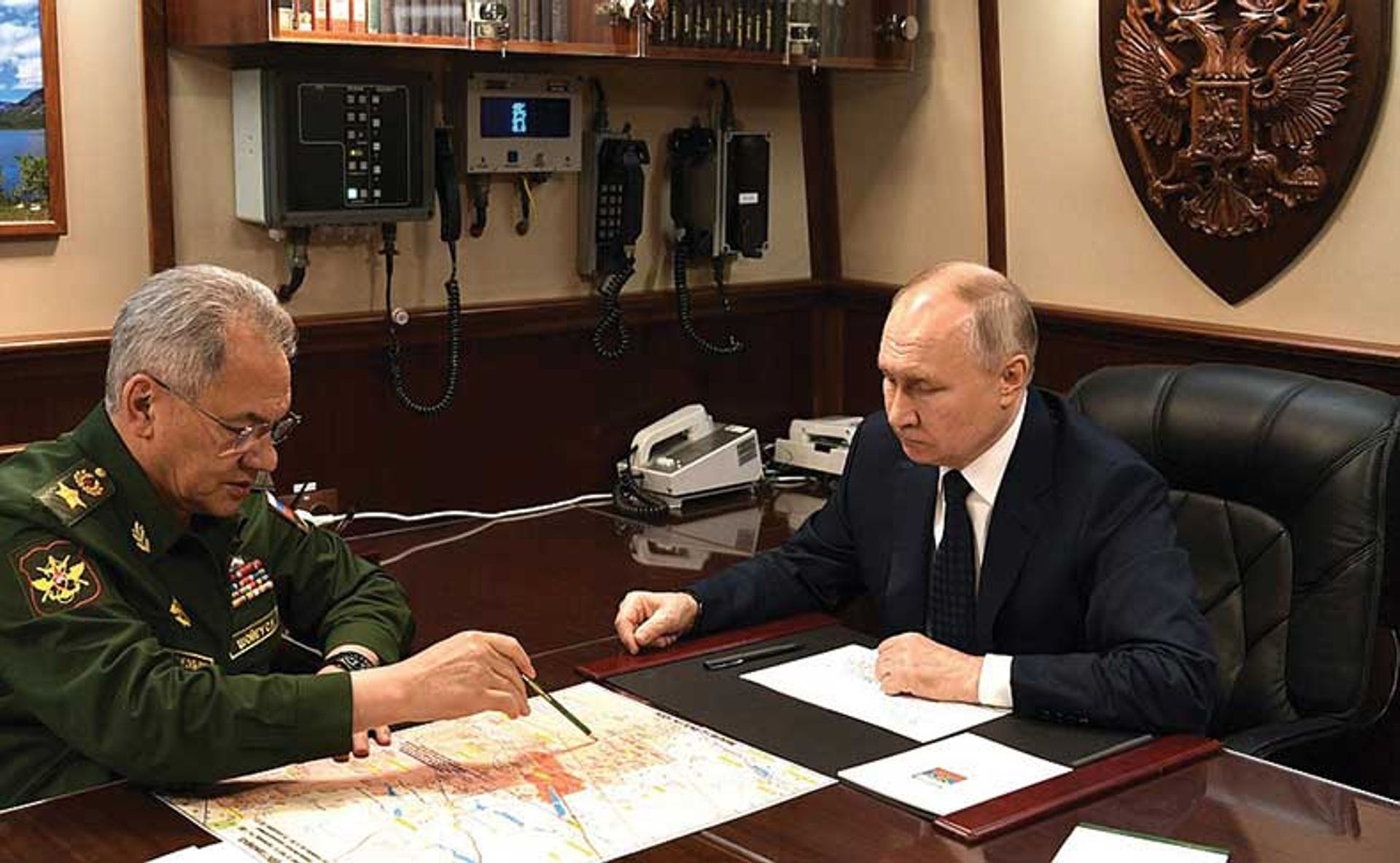When Russia launched its full-scale invasion of Ukraine in February 2022, it laid siege to Mariupol, a strategic port city in the east of the country, with thousands killed as bombs and artillery destroyed housing, museums and the local theatre. Now, Russian authorities have announced plans to memorialise the destruction of the occupied city in the Donbas—which it blames on Ukraine—with a new “museum of the liberation of Mariupol”, scheduled to open in summer 2024.
As the invasion enters its third year, the “liberation museum” is part of a Kremlin campaign to use museums as war propaganda venues, both across Russia and in occupied regions of Ukraine, which Russian officials refer to as “new territories of Russia” or Novorossiya, a tsarist-era colonial term.
Speaking on 30 January at a conference held at the VDNH Stalin-era fairgrounds in Moscow, Olga Lyubimova, Russia’s culture minister, said the museums will be “dedicated to the modern history of Donbass and Novorossiya”—the Tass news agency reported her as saying and used the Russian spelling of Donbas—and include “authentic objects, documents, materials dedicated to the development of our country and preserving the memory of the exploits of our compatriots”.
VDNH has been turned into a showcase for Kremlin ideology and was the December launchpad for Vladimir Putin’s latest presidential run. Elections are scheduled for mid-March. In 2015, VDNH was the first site of the Russia My History “history park”, curated by Tikhon Shevkunov, a powerful Russian Orthodox bishop. “Exhibitions based on these methodological materials are placed in regional and municipal museums, libraries and public spaces,” Lyubimova reportedly said at the conference. “More than 1,800 projects have already been [launched] in museums. In 2024, at least 450 additional such [displays] and exhibitions will be created throughout the country.”
The Art Newspaper has seen a 28-page document titled “Methodological Recommendations for Creating Exhibitions Dedicated to the History of the Special Military Operation in Museums of the Russian Federation”. The “special military operation,” abbreviated in Russian as SVO, is the Kremlin’s official term for the war.
The “methodological recommendations” include museum exhibitions showing that the SVO was needed to protect the “Russian-speaking population” from “military aggression carried out in the Donbass” by Ukraine “since April 2014”, and “to protect the Russian Federation from an impending attack by the Armed Forces of Ukraine”.
The document was compiled by the culture ministry, the contemporary history museum and the Russian Historical Society in response to Putin’s April 2023 order to create museums nationwide dedicated to Russia’s war with Ukraine.

The paper warrior: Russia’s president Vladimir Putin with Sergei Shoigu, the defence minister
Photo © kremlin.ru
“One of the most important factors ensuring the unity and consolidation of Russian society within the country is the preservation of the continuity of spiritual and moral values and the protection of historical truth,” the document states. This is to be done by creating “museums [and exhibitions] dedicated to its history” and displaying artefacts as central to the effort. Ukraine’s government is referred to as a “Nazi regime” and Novorossiya as “part of the history of Russia since the end of the 18th century”.
Among the recommendations for SVO museum exhibitions and artefacts for display are: “small arms, etc (especially edged weapons with Nazi symbols), including foreign production”; “children’s toys with traces of blood, damaged toys (dolls, cars, etc)”; “instruments of torture”; “prohibited Ukrainian and Nato ammunition (neutralised); fragments of ammunition and missiles”.
The State Historical Museum on Red Square held a major Novorossiya exhibition in 2023, from the reign of Catherine the Great to the SVO. The museum described post-Soviet independent Ukraine as transforming into an “Anti-Russia” and “launching the process of Nazification, militarisation and its entry into Nato”. The museum’s director Alexey Levykin sent employees to the Russian-occupied Luhansk region to gather artefacts.
Mikhail Piotrovsky, the director of the State Hermitage Museum in St Petersburg, told Russia’s RBC channel in December that the Hermitage is “working to help restore museums in new territories”, including Mariupol.

